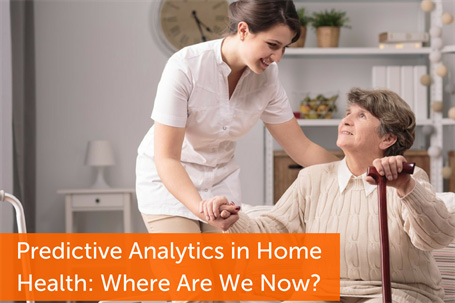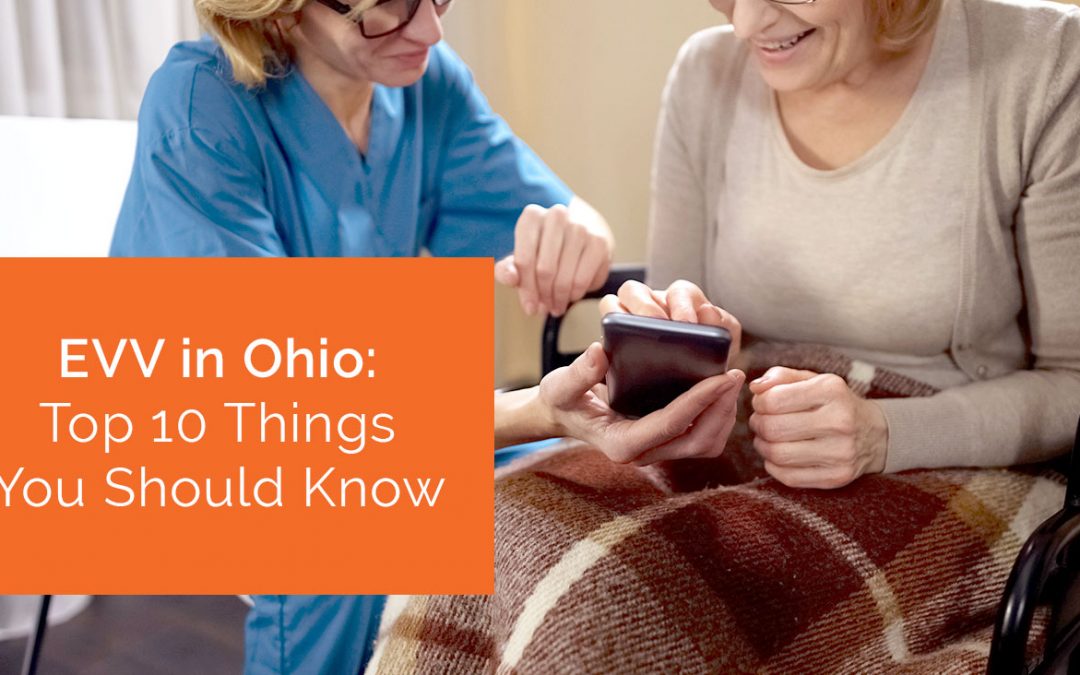For several years, health care researchers and experts have sung the praises of the power of predictive analytics in improving health care. By drawing on existing data, they have said, we can make better predictions about what patients will do in the future, and help patients and providers make better, more informed decisions about patient care.
So where are we now? We’ve clearly made great strides in artificial intelligence and data analytics, but have we reached the point that so many imagine? Predictive analytics holds great promise for home health in particular, so let’s look at what some expected would happen — and what is really happening.
Monitoring Patients From Afar … Eventually
One area where predictive analytics was projected to be integrated into home health care was in the realm of remote patient monitoring. Using data collected via wearable and in-home monitors, health care providers could stay abreast of a patient’s progress, activities, and vital signs, and, based on predictions made via algorithms, identify when individual patients were at risk for issues that could potentially lead to hospitalization. When a patient was identified as being at-risk, a home health provider would intervene.
Experts note that these proactive interventions could not only reduce hospital readmissions, but improve overall outcomes for patients after hospital discharge. Poor transitions from the hospital to the home are often cited as a reason for readmissions and less than desirable outcomes. Home monitoring, experts argue, could become a key to providing better care and improving those transitions. Even those patients who do transition home well can benefit from the monitoring; many elderly patients are at risk for falls and complications in between home health visits, and anomalies in the data could alert providers to a potential issue that needs to be addressed.
The fact that this type of monitoring is not the standard reveals just one of the barriers to predictive analytics in home health care. While many older adults are used to wearable devices in the form of medical alert bracelets or necklaces, the fact is that fewer than half of all adults who use wearables use them every day. Quite simply, getting buy-in from both patients and providers has proven difficult, but that’s not the only factor keeping predictive analytics from becoming a standard part of home health.
Too Much Data From Too Many Sources
Getting buy-in for predictive analytics is only the beginning. Experts have identified other barriers to wider adoption, including:
- Security. Maintaining the security of patient information, especially in the face of strict HIPAA rules, is a top priority, and presents challenges that have yet to be overcome.
- Lack of consistency in data. One issue that providers have noted when it comes to using AI in healthcare is the fact that data still comes to them in disparate “packets,” meaning that they need to analyze several different types of data to draw conclusions, which can be cumbersome.
- Lack of data sharing. Different organizations use different programs for capturing and storing data; a hospital will use one HER program while home health agencies use home health software. Not all of these systems are compatible, and if they aren’t, there is a distinct lack of data sharing across organizations, which leads to incomplete data sets.
- Lack of skills. Many organizations simply lack the talent and knowledge required to make sense of the reams of data being collected.
We’ve Made Some Progress
Although predictive analytics hasn’t quite reached the levels predicted even just a few years ago, it is being used in several areas relevant to home health.
One area in particular that has benefited greatly from predictive analytics are efforts to reduce hospital readmissions. Several hospitals and health care systems, including Kaiser Permanente and the University of Pennsylvania, have been using information contained in electronic health records to identify the factors that are likely to lead to readmissions, and take action to avoid that.
One large Texas hospital, for instance, used information from nearly 30 data points contained in patient charts, to identify and target patients who had a high risk of readmission while they were still in the hospital. Based on this information, the hospital developed a plan for better care coordination from the beginning of the hospital stay, so they will do better once they leave the facility. Via these analytics alone, the hospital was able to reduce readmissions by five percent.
Predictive analytics is also being put to use in population-based medicine and risk management. Providers are pulling data from electronic medical records to find connections between disparate diseases, or using information about past behaviors to predict potential problems in the future. For example, providers have determined that certain behaviors, such as poor medication management, are key contributors to rehospitalizations. Based on EMR information, hospital providers can identify patients at risk for not managing medications properly, and determine the correct interventions to reduce risk. This might include a recommendation for home health visits, among other follow ups.
Predictive analytics has the potential to be usable and to improve the delivery of care across the spectrum. We are seeing that already. By removing the barriers to the integration of data and improving data sharing, it’s possible that home health can be on the forefront of revolutionizing home healthcare. To begin your own agency’s journey into the power of data, check out Complia Health’s array of advanced software.




